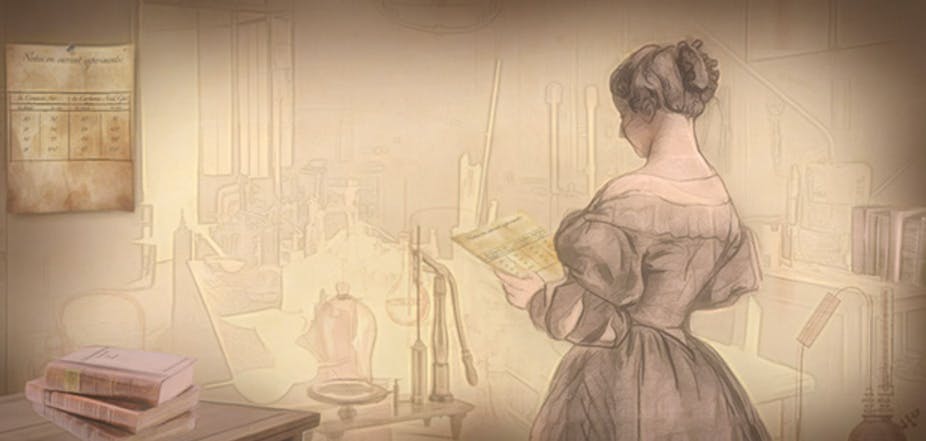… Foote’s experiments in the 1850s demonstrated the ability of atmospheric water vapor and carbon dioxide to affect solar heating, foreshadowing John Tyndall’s later experiments that described the workings of Earth’s greenhouse effect. Despite her remarkable insight into the influence that higher carbon dioxide levels in the past would have had on Earth’s temperature, Foote went unnoticed in the history of climate science until recently.
“An atmosphere of that gas would give to our earth a high temperature”
Foote’s story takes place about a century before the women mentioned above. Foote was an amateur scientist—known as a natural philosopher in that era—who in the 1850s conducted some of the first experiments exploring the influence of different atmospheric gases on the “heat of the sun’s rays.”
In Foote’s time, geologists were discovering the world’s climate and vegetation had once been radically different. In the periods when coal deposits were forming in swampy seas, geologists concluded that the atmosphere had once had much higher levels of carbon dioxide. Foote correctly speculated that this would have made Earth much warmer. Imagined landscape of a Carboniferous Period swamp from Introduction to Botany (1901), by William Chase Stevens. Image provided by the Internet Archive of Books.
Using glass cylinders, each encasing a mercury thermometer, Foote found that the heating effect of the Sun was greater in moist air than dry air, and that it was highest of all in a cylinder containing carbon dioxide. She wrote, “The receiver containing this gas became itself much heated—very sensibly more so than the other—and on being removed [from the Sun], it was many times as long in cooling.” …

